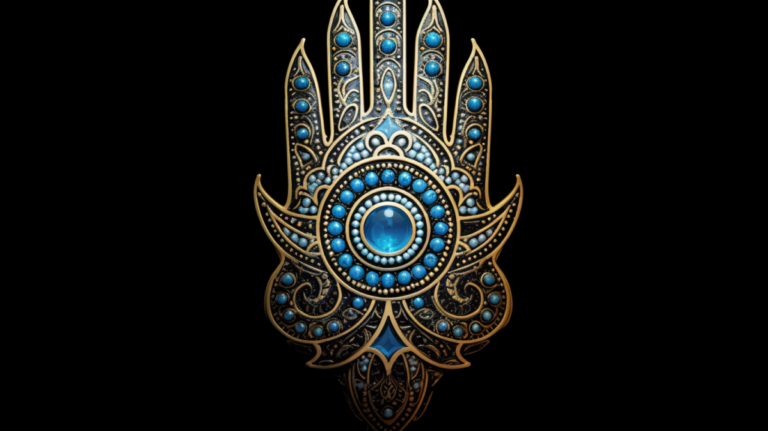The Hamsa, a sacred symbol with deep-rooted origins in various cultures, holds profound significance as a symbol of protection, blessings, and spiritual power. Also known as the Hand of Fatima or the Hand of Miriam, the Hamsa has transcended time and borders, becoming a cherished emblem cherished by many. In this comprehensive article, we explore the history, cultural significance, symbolism, and modern-day relevance of the Hamsa.
–Origins in Ancient Cultures: The origins of the Hamsa can be traced back to ancient Mesopotamia, where it was initially revered as a symbol of divine protection and good fortune. Over time, the symbol spread across different cultures and religions, including Judaism, Islam, and Christianity.
-The Symbolic Hand: At its core, the Hamsa is a stylized representation of a hand with three extended fingers and two opposable thumbs. This hand-shaped talisman is believed to ward off the evil eye and bring blessings to the bearer.
–The Hand of Fatima – Islamic Connection: In Islamic tradition, the Hamsa is often referred to as the Hand of Fatima, named after the daughter of the Prophet Muhammad. Fatima’s hand symbolizes her status as a revered and blessed figure within Islam, evoking protection and divine grace.
–The Hand of Miriam – Jewish Significance: Within Judaism, the Hamsa is known as the Hand of Miriam, in honor of Miriam, the sister of Moses and Aaron. The symbol holds protective qualities and is often associated with the prevention of negative energies.
–The All-Seeing Eye in the Hamsa: A common feature within the Hamsa is the presence of an all-seeing eye at the center of the palm. This eye, known as the Nazar, serves as an additional safeguard against the evil eye, casting away malevolent glances and energies.
–Hamsa in Art and Jewelry: The Hamsa’s intricate design and rich symbolism have inspired artists and artisans across generations. It can be found in a wide array of jewelry, amulets, and decorative objects, all serving as powerful talismans of protection and good fortune.
–The Hamsa and Kabbalah: In Kabbalistic teachings, the Hamsa plays a significant role, representing the divine feminine and embodying the power of intuition, spiritual insight, and protection from negative forces.
–Modern-Day Relevance: In contemporary culture, the Hamsa remains a popular symbol that transcends religious and cultural boundaries. Its presence can be seen in fashion, home decor, and various forms of art, carrying its protective essence into the modern world.
Harnessing the Power of the Hamsa: As a symbol of protection, blessings, and spiritual guidance, individuals often use the Hamsa as a personal talisman or gift it to loved ones to share its positive energies.
The Hamsa stands as a universal symbol of protection and blessings, transcending cultural and religious boundaries. Its enduring allure lies in its capacity to bestow the divine power of protection upon those who embrace it. Embrace the Hamsa’s essence, and let its sacred hand shield you from harm, granting you the blessings and spiritual strength that have resonated through the ages.
